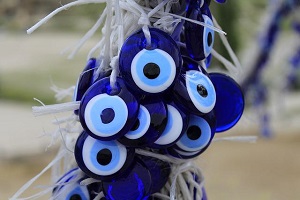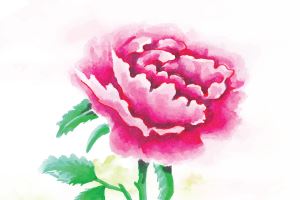The Goddess of mercy is one of the most well-recognized religious figures not just in China and many parts of Asia, but also is many parts of the world (including western countries) even when Buddhism or Taoism followers are a minority.
So well loved is the goddess that in various countries such as China, Hong Kong, Taiwan, Singapore, etc, have erected temples dedicated to worshiping her.
While she is associated with Buddhism, many people who are not Buddhist and even freethinkers pray to her for well wishes.
Origins of the Goddess of Mercy
The Goddess of mercy is know as 觀音 pronounced as Guan Yin, or 觀音菩薩 (guan yin pu sa) meaning guan yin buddha.
The origins of guan yin can be traced back to india where she started out as a male Buddhist Bodhisattva of Compassion, and later took the form of a non-sectarian Goddess of Compassion.
Named Avalokitesvara, he was depicted in 33 forms in cultural art.
As Buddhism slowly spread it’s teachings and introduced into China via the Silk Road, Indian buddhism slowly changed when the Chinese adopted it.
As such, Avalokitesvara became known as Guan Yin.
Guan Yin has 3 birthdays:
- 19th day of the second lunar month marks the birth as human
- 19th day of the sixth lunar month marks the birth as a deity
- 19th day of the ninth lunar month marks the renunciation of mortal pursuits
While ancient artifacts during the Qing dynasty can be observed to depict Guan Yin as male, for some reason at some period in time, the people started to perceive Guan Yin as female.
This has stuck. And today, the goddess of mercy is almost exclusively depicted as female in the main stream.
33 forms of Guan Yin
As mentioned earlier, guan yin has been depicted in 33 forms.
While we often only see a handful of them, it is important that we appreciate her in all her forms.
- Willow (杨柳观音)
- Dragon head (龙头观音)
- Sutra holding (持经观音)
- Whole light (圆光观音)
- Fun and games (游戏观音)
- White dress (白衣观音)
- Lotus (莲卧观音)
- Overlooking (泷见观音)
- Using medicine (施药观音)
- Fish basket (鱼篮观音)
- Moral king (德王观音)
- Water moon (水月观音)
- Single leaf (一叶观音)
- Blue neck (青颈观音)
- Virtue (威德观音)
- Longevity (延命观音)
- Treasure (众宝观音)
- Cave (岩户观音)
- Peace (能静观音)
- Anavatapta (阿耨观音)
- Fearless (阿麽提观音)
- Leave clothing (叶衣观音)
- Lapis lazuli (琉璃观音)
- Tara (多罗尊观音)
- Clam (蛤蜊观音)
- 6 eras (六时观音)
- Compassion (普悲观音)
- Ma’s wife (马郞妇观音)
- Palms together (合掌观音)
- The one (一如观音)
- No duality (不二观音)
- Holding lotus (持莲观音)
- Watering (洒水观音)
There are actually various other forms of guan yin. But the 33 forms are often mentioned. So they are listed above.
On top of these forms, the goddess of mercy is known for a variety of emblems such as a bow, willow branch, arrow, conch shell, lotus flower, wish gem, mirror, etc.
When depicted with different emblems, paintings or statues carry different meanings and intentions.
Legends of Guan Yin Pu Sa
Among the many legendary stories of the goddess, the most infamous of which is probably the one about Miao Shan.
The story starts with a King of the state of Chu named Miao Zhuang who had a daughter named Miao Shan among his children. She had no desire for material possessions and wanted to leave the palace for a nunnery to devote herself to religion. The king was livid but she left nevertheless. During times of hardship, the heavenly king sympathized with her plight and sent animals like tigers and pigs to help care for her. Assuming this was done with black magic her father gave an order for her to be executed, but a tiger rescued her from the execution. She then moved into the mountains. Some time later, the king fell seriously ill and was adviced that only divine medicine made from the eyes and arms of a person without anger can cure him. The quest for this person ended up locating Miao Shan on the mountains. She proceeded to gouge out her eyes and cut off her arms to save her father. When the king healed, not knowing who had sacrificed to save him, he went on a journey up the mountains to meet his savior. Once he reached the summit, he recognized her as his daughter Miao Shan. He remorsefully cried and asked for forgiveness. Just then, the thousand-eyed and thousand-armed Guan Yin appeared. Miao Shan then had her arms and eyes back, but died in peace.
Then there was the tale that told of a monk losing his way in the desert and dying of thirst. His horse then miraculously started to guide itself along and they arrived at an oasis of spring water. That divine intervention was of course, from the grace of guan yin.
There’s also the story of how a Japanese monk tried to steal a statue of the goddess back to Japan but his ship was stopped in the middle of the sea by thousands upon thousands of lotus flowers. The boat ended up ashore around mount Putuo (普陀山). A temple was then set up there for the statue. This became known as the Guanyin who refuses to leave.
There are actually many more stories about the benevolence of the goddess and the assistance she had given to people in need.
Too many to talk about all of them here.
All these stories tell the extraordinary attributes of the goddess of mercy in peace and forgiveness.
Feng shui
Many believe that the display of guan yin portraits and statues is not directly related to feng shui, but more of a religious nature.
But as Buddhists, Taoists, and even Confucianist, are known to practice feng shui extensively, feng shui and religion are often intertwined to a certain extent by religious people.
As such, the goddess of mercy have the strongest feng shui connotations when feng shui is practiced together with religious beliefs.
At the same time, a lot of feng shui artifacts like the lotus and laughing buddha belong in the same world as the beloved goddess. It’s like the Avengers and X-men belonging in the same Marvel world.
Because of this, it is fair to ascertain that the Guan Yin Pu Sa as it’s place in the practice of feng shui.
Especially in the symbolic arena.
If you are a religious person, then the ideal space to place the Kwan Yin is of course on a proper altar with auspicious feng shui dimensions facing either the front door or window out into the heavens.
She should be properly and respectfully placed on altars for blessings of good health and general safety. On tables or display cabinets, ensure that she is on an elevated position at least 3 feet above the ground.
When accompanied by celestial creatures such as the pi xiu or chi lin, they should be in front and below her as escorts and protectors.
Because the goddess of mercy embodies love, peace and compassion, it is not the ideal deity to call for wealth luck.
Saying that, there’s nothing wrong setting her up in the wealth location as a protector for your wealth.
Statues or paintings can be displayed in relationship corners or health areas which can benefit from a little assistance.
The powers of healing and “good over evil” also makes her capable of dispelling negative energy originating from bad flying star presence and combinations.
However, never use the goddess to block poison arrow sha chi emitting from exposed beams, pillars and such. That is disrespectful and very bad placement.















